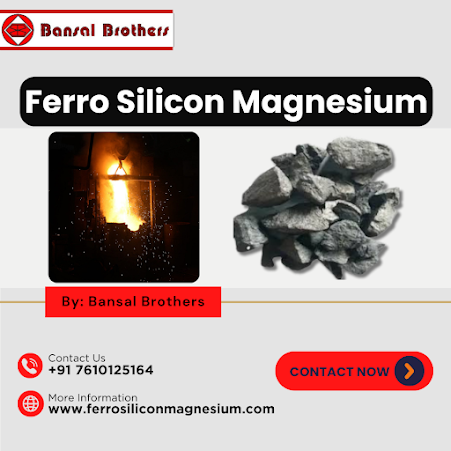Effective Techniques for Reducing Slag Defects in Ductile Iron Production
In the world of ductile iron casting, quality is everything. From automotive components to heavy machinery and industrial parts, every casting must meet strict standards for strength, durability, and surface finish. Yet, one of the most persistent challenges foundries face is the formation of slag inclusion defects. These unwanted inclusions not only weaken the structure but can also lead to costly rework and rejection.
For manufacturers and foundry managers aiming for excellence, understanding how to reduce slag defects is key to achieving cleaner, more reliable castings. Let’s explore the effective techniques that can help ensure consistent quality in ductile iron production.
What Are Slag Defects and Why Do They Matter?
Slag inclusions are non-metallic impurities that become trapped within the metal during the melting or pouring process. They can originate from oxidized metal, furnace slag, or leftover impurities from fluxes and additives.
These defects can cause:
Weak points in the casting structure
Poor surface finish and machinability
Reduced fatigue strength and performance
Increased scrap or rework rates, adding to production costs
In short, slag defects not only impact product reliability but also customer satisfaction — especially when clients demand consistent, defect-free castings for critical applications.
1. Improve Raw Material Quality
The quality of your charge materials directly affects the cleanliness of molten iron. Using contaminated or low-grade scrap introduces oxides, silicates, and other unwanted materials that contribute to slag formation.
Best Practices:
Use clean, dry, and rust-free scrap to minimize impurities.
Prefer low-sulfur pig iron and carefully selected steel scrap.
Avoid materials coated with paint, oil, or moisture that can release gases or oxidize during melting.
By investing in better charge materials, foundries can reduce slag generation at the very start of production.
2. Control Furnace Slag Formation
During melting, slag forms naturally as oxides rise to the surface of the molten metal. However, if not properly managed, this slag can mix back into the metal and cause inclusion defects.
Techniques to Reduce Slag Entrapment:
Regularly skim slag from the surface of the furnace before tapping.
Use fluxes and deoxidizers to bind impurities for easier removal.
Maintain an optimum temperature range, as overheating can increase oxidation and slag volume.
Ensure steady furnace operation to prevent turbulence and metal re-oxidation.
A cleaner melt leads to cleaner castings — and significantly fewer defects downstream.
3. Optimize Magnesium Treatment
In ductile iron, magnesium treatment is essential for achieving the desired nodular graphite structure. However, this process can also contribute to slag generation if not carefully controlled.
Tips for Effective Treatment:
Use high-quality Ferro Silicon Magnesium alloys for consistent results.
Ensure proper inoculation timing and treatment temperature.
Avoid excessive magnesium addition — more isn’t always better.
Employ Cored Wire Injection systems for precise and uniform alloy addition.
An optimized treatment process not only refines graphite formation but also minimizes slag-related issues, resulting in smoother and stronger castings.
4. Enhance Pouring and Gating Design
Even when molten metal is clean, poor gating or pouring systems can cause slag inclusions by allowing impurities to enter the mold cavity.
Practical Solutions:
Design gating systems that promote smooth, laminar flow instead of turbulence.
Use ceramic foam filters or slag traps to capture floating inclusions.
Ensure controlled pouring speed and height to prevent air entrapment.
Tilt the ladle slightly during pouring to reduce the chance of slag flow into the mold.
A well-designed gating system acts as a natural barrier, helping deliver clean metal into every mold cavity.
5. Maintain Clean Ladles and Tools
It’s often overlooked, but ladle and tool cleanliness plays a major role in defect prevention. Residual slag or metal buildup on the ladle lining can easily contaminate a fresh batch of molten iron.
Recommended Steps:
Clean ladles thoroughly after each pour.
Repair damaged linings promptly to prevent slag adhesion.
Use protective coatings or refractory washes on ladle surfaces.
Keeping your tools clean is one of the simplest yet most effective ways to maintain casting purity.
6. Regular Quality Monitoring and Metallurgical Analysis
Consistent quality control is essential for early detection and correction of slag-related issues.
Implement a strong QA system that includes:
Thermal and chemical analysis of molten iron.
Spectrometer checks to verify composition and trace elements.
Microstructure examination of sample castings.
Feedback loops between production and quality teams for process improvement.
A proactive approach helps in identifying the root cause of slag defects — long before they reach the final product stage.
7. Continuous Training and Process Discipline
Even the best equipment and materials cannot guarantee defect-free castings without skilled operators and disciplined process execution.
Encourage a culture of quality awareness across your team. Train furnace operators, pourers, and metallurgists to understand the impact of slag control at every step. When everyone is aligned on quality goals, defect rates drop and customer confidence rises.
Conclusion: Cleaner Metal, Better Castings
Reducing slag defects in ductile iron production is not just about process control — it’s about commitment to quality at every stage. From raw material selection to ladle handling and metallurgical testing, every step influences the final outcome.
At Bansal Brothers, our expertise in ferro alloys and foundry solutions supports industries in Eliminating Slag inclusion defects of ductile iron castings through superior alloy quality and optimized process guidance.
By adopting these effective techniques, foundries can:
1. Minimize scrap and rework
2. Improve mechanical properties of castings
3. Increase customer satisfaction
4. Enhance overall production efficiency
In a competitive market where customers expect precision and reliability, producing slag-free ductile iron castings is more than a goal — it’s a mark of true craftsmanship and technical excellence.
#FerroSiliconMagnesium #CoredWireInjection #EliminatingSlagInclusionDefectsOfDuctileIronCastings



Comments
Post a Comment